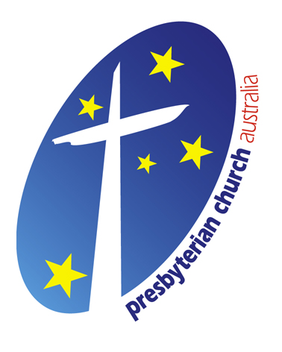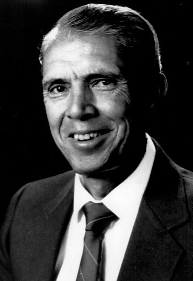
The Seventh-day Adventist Church (SDA) is an Adventist Protestant Christian denomination which is distinguished by its observance of Saturday, the seventh day of the week in the Christian (Gregorian) and the Hebrew calendar, as the Sabbath, its emphasis on the imminent Second Coming (advent) of Jesus Christ, and its annihilationist soteriology. The denomination grew out of the Millerite movement in the United States during the mid-19th century and it was formally established in 1863. Among its co-founders was Ellen G. White, whose extensive writings are still held in high regard by the church.

The Uniting Church in Australia (UCA) was founded on 22 June 1977, when most congregations of the Methodist Church of Australasia, about two-thirds of the Presbyterian Church of Australia and almost all the churches of the Congregational Union of Australia united under the Basis of Union. According to the church, it had 243,000 members in 2018. In the 2016 census, 870,183 Australians identified with the church, but that figure fell to 673,260 in the 2021 census. In the 2011 census, that figure was 1,065,796.

Avondale University is an Australian private university affiliated with the Seventh-day Adventist Church. It is a part of the Seventh-day Adventist education system, the world’s second largest Christian school system. It has two campuses, the Lake Macquarie campus being the primary campus situated in Cooranbong, New South Wales. The other campus is located at Sydney Adventist Hospital in the Sydney suburb of Wahroonga and is the main campus of the nursing school.
Cooranbong is a town in a suburb of the City of Lake Macquarie, Greater Newcastle in New South Wales, Australia, west of the town of Morisset off the M1 Pacific Motorway. Cooranbong is surrounded by the Watagans National Park.

The Presbyterian Church of Australia (PCA), founded in 1901, is the largest Presbyterian denomination in Australia. The larger Uniting Church in Australia incorporated about 70% of the PCA in 1977.

Desmond Ford was an Australian theologian who studied evangelicalism.
The theology of the Seventh-day Adventist Church resembles early Protestant Christianity, combining elements from Lutheran, Wesleyan-Arminian, and Anabaptist branches of Protestantism. Adventists believe in the infallibility of the Scripture's teaching regarding salvation, which comes from grace through faith in Jesus Christ. The 28 fundamental beliefs constitute the church's current doctrinal positions, but they are revisable under the guidance of the Holy Spirit, and are not a creed.
The Seventh-day Adventist baptismal vow is a list of 13 belief statements which a person joining the Seventh-day Adventist Church is given and accepts at believer's baptism. In Adventist understanding, baptism, is associated with officially joining the Adventist church, which is a part of the community of believers in Christ. The vow is explained in the church manual. In 2005 an alternate vow consisting of three statements was approved at the General Conference Session, and the baptizing pastor now has a choice of which set to use. They complement the 28 Fundamentals.
The South Pacific Division (SPD) of Seventh-day Adventists is a sub-entity of the General Conference of Seventh-day Adventists, which oversees the Church's work in the South Pacific nations of Australia, New Zealand, Papua New Guinea and the islands of the South Pacific. Its headquarters is in Wahroonga, Sydney, Australia.
Historic Adventism is an informal designation for conservative individuals and organizations affiliated with the Seventh-day Adventist Church who seek to preserve certain traditional beliefs and practices of the church. They feel that the church leadership has shifted or departed from key doctrinal "pillars" ever since the middle of the 20th century. Specifically, they point to the publication in 1957 of a book entitled Seventh-day Adventists Answer Questions on Doctrine; which they feel undermines historic Adventist theology in favor of theology more compatible with evangelicalism. Historic Adventism has been erroneously applied by some to any Adventists that adhere to the teachings of the church as reflected in the church's fundamental beliefs such as the Sabbath or the Spirit of Prophecy. They misapply those who hold to mainstream traditional Adventist beliefs as synonymous with Historic Adventist.
Signs of the Times is a monthly magazine originally published by Pacific Press, a Seventh-day Adventist publishing house. Signs presents articles that are considered to be helpful in assisting readers to live in modern society. The magazine focuses on life's-style issues, health articles and Christian devotional and other religious articles. From its historical roots, the magazine emphasizes the second coming of Christ to this earth and living such lives so as to be able to meet Jesus at His second coming.

Arthur Grosvenor Daniells was a Seventh-day Adventist minister and administrator, most notably the longest serving president of the General Conference. He began to work for the church in Texas in 1878 with Robert M. Kilgore and also served as secretary to James and Ellen White for one year, and later worked as an evangelist. In 1886, he was called to New Zealand, and was one of the pioneers of the Seventh-day Adventist Church in the South Pacific. Daniells had astounding success through his dynamic preaching and on October 15, 1887, he opened the first Seventh-day Adventist church in New Zealand at Ponsonby. While there he served as president of the New Zealand Conference, and of the Australia Conference. Later, he became the president of the Australasia Union Conference before becoming president of the General Conference in 1901 and served as president until 1922.
Signs Publishing Company is a Seventh-day Adventist publishing house in Warburton, Victoria, Australia.
Arthur Nelson Patrick was a Seventh-day Adventist theologian and historian. At the time of death, he was an honorary senior research fellow at Avondale College in New South Wales, Australia. He also worked in pastoral ministry, evangelism, religion teaching, academic administration, and hospital chaplaincy for the Seventh-day Adventist church.
Nathan G. Brown is a Christian author and editor. Brown is the "book editor" for Signs Publishing Company, based near Melbourne, Victoria, Australia.
Colin D. Standish and Russell Roland Standish were identical twin brothers and "historic" Seventh-day Adventists. They were often referred to collectively as the Standish brothers. They co-authored many books together, which have been published by their Hartland Institute.
The Seventh-day Adventist Church in New Zealand is formally organised as the New Zealand Pacific Union Conference of Seventh-day Adventists, a sub-entity of the South Pacific Division of Seventh-day Adventists. The membership of the Union is 20,943 as of 30 June 2020. The population to membership ratio is 1 Adventist to every 268 people. The headquarters for the Union is in Auckland, New Zealand.
Milton Raymond Hook is a Seventh-day Adventist religion educator, author and church historian. He is an honorary research fellow at Avondale College, New South Wales, Australia.
The Seventh-day Adventist tertiary student ministry is a group belonging to the Seventh-day Adventist Church which serves on some universities and other tertiary education campuses throughout the world. Some of these are run independently of the official church. Two of these organizations are the Adventist Christian Fellowship of North America and the Adventist Students Association of Australia.







